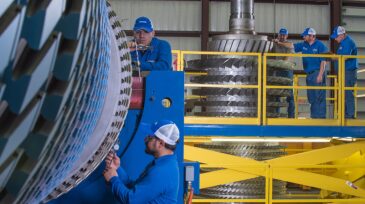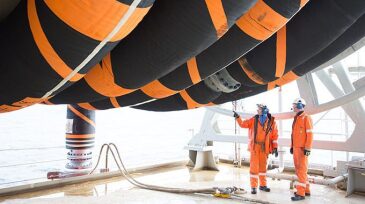Safety
A resilience-based approach to safety was the focus of a panel of experts at the 2025 SPE Annual Technical Conference and Exhibition in Houston.
This paper focuses on developing a model that can be used in an automated, end-to-end flare-smoke detection, alert, and distribution-control solution that leverages existing flare closed-circuit television cameras at manufacturing facilities.
This paper presents a physics-informed machine learning method that enhances the accuracy of pressure transient analysis, predicting reservoir properties to enhance waste slurry injection and waste disposal.
-
Sulzer’s Houston Service Center has passed a major milestone in its safety record, operating for more than 3 years without a lost-time incident (LTI).
-
Effective Prevention of Tuberculosis Transmission in Oil and Gas Workplaces: A Programmatic ApproachIntegrating a tuberculosis (TB) control program into existing operation systems has provided a sustained approach for effective and efficient prevention of TB transmission in the workplace.
-
This paper presents a scientific method for reducing fatigue risks in oil and gas organizations that operate a slowly rotating shift schedule.
-
Getting to Zero and Beyond: The Path Forward, sets the stage for continuing the discussion across the industry of the essential steps the industry must take to sustain zero harm.
-
This paper examines the use of injury rates as a key performance indicator (KPI). It argues that, as a KPI, injury-frequency rate is no longer a valid measure.</p>
-
One of the more difficult hurdles to overcome when developing a safety leadership culture is getting front-line employees to understand the full weight of their role in stop-work authority.
-
The US Bureau of Safety and Environmental Enforcement’s SafeOCS program has released its 2017 annual report on Blowout Prevention System Safety, noting 18 of 25 operators associated with rig operations in the Gulf of Mexico reported 1,129 equipment component failure events.
-
Last year, according to reports filed by 45 IOGP member companies, the fatal accident rate associated with global upstream operations fell by 36% from the previous year. While the number of fatalities was down, the number of fatal incidents increased from 29 in 2016 to 30 in 2017.
-
Just as Libya resumes oil exports from recently shuttered ports, an attack on its largest field is setting back progress yet again.
-
The Mental Health Commission of Canada explains the effect of employees’ daily experience on mental health in new white paper.













